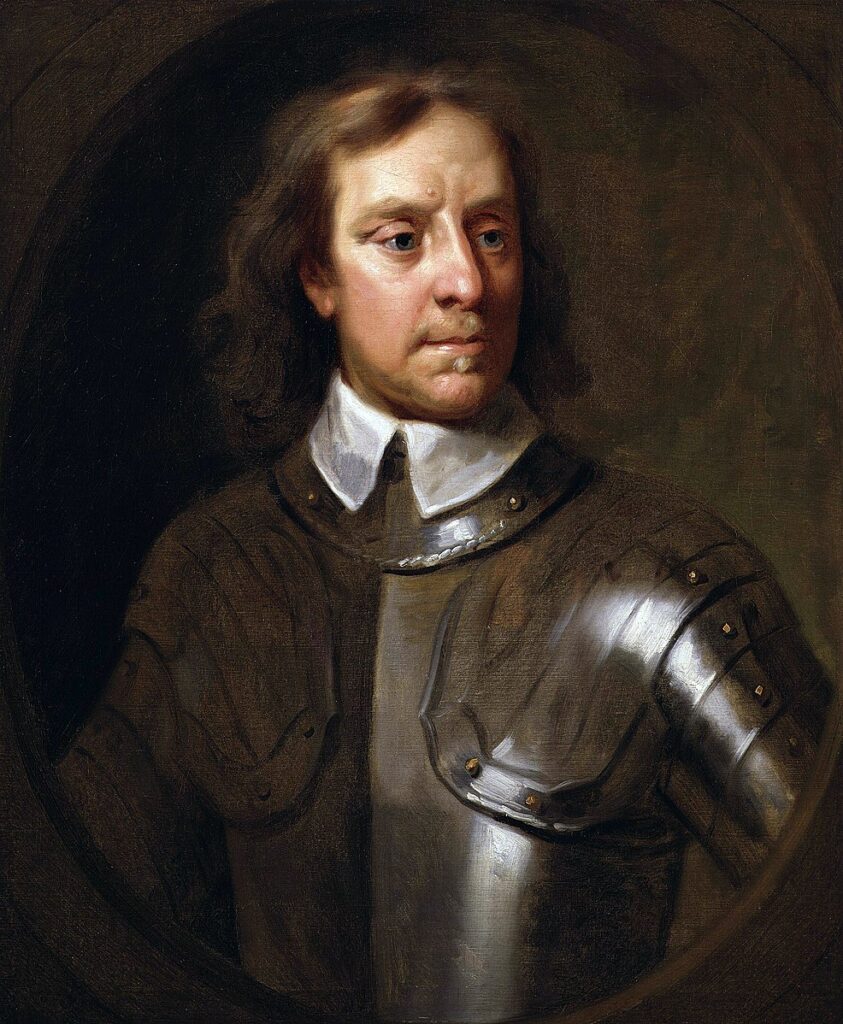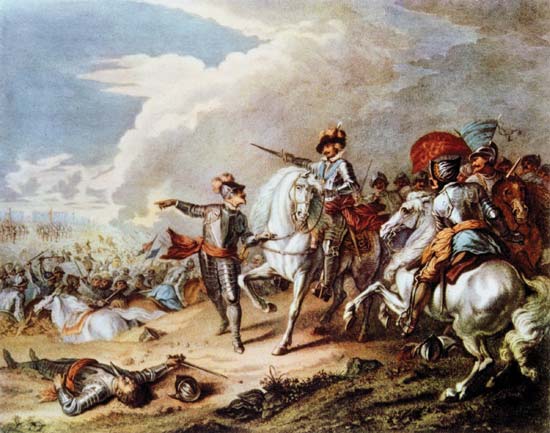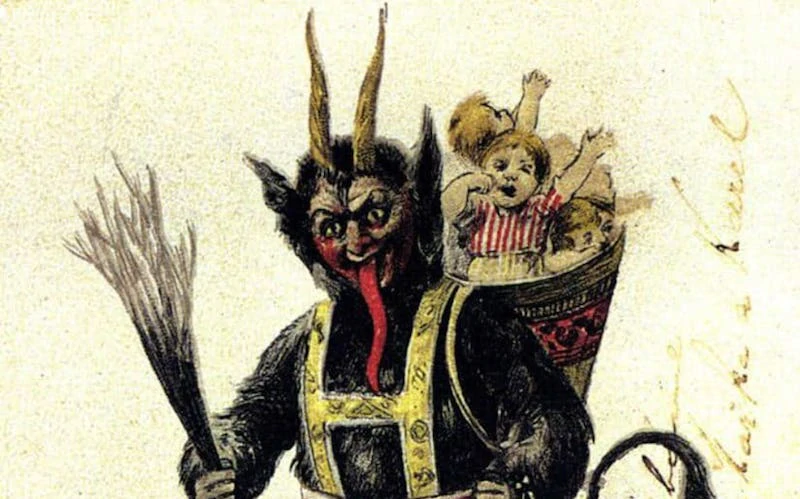The history of England is filled with many military geniuses, influential politicians, and devout men of God.
However, no one else may have fulfilled all three roles at once like Oliver Cromwell did. The United Kingdom as we know it today wouldn’t exist if not for Cromwell’s role in the English Civil Wars.

Cromwell’s Complicated Legacy
The UK today is a constitutional monarchy, but it wasn’t always so. Until the 17th century, English kings and queens held all the executive power in government. They ruled in an absolutist monarchy, up until the reign of Charles I.
That all came to an end when Cromwell became responsible for the first-ever trial and execution of a king for treason. But why did he execute Charles I?
To understand how Cromwell arrived at this history-making decision, we need to consider the time he lived in and the kind of person he was. On one hand, he was a devout Christian of the Puritan sect.
On the other, he was a ruthless battlefield commander who was feared by his enemies. English republicans look up to him as one of the fathers of their movement while the Irish and Scots consider his military actions against them as the mark of a villain.
So, which description suits Cromwell best? Was he a saint or a sinner? Cromwell was a man with many different facets to his personality. Pigeonholing him into a single category does not do his complicated legacy justice.
If we want to form an opinion on Oliver Cromwell, we will need to learn his whole story.
A Remarkable Man of Unremarkable Origin
It’s a tale that begins in a humble setting: the sleepy little town of Huntingdon near Cambridge. Cromwell was born at the turn of the 17th century, in 1599, into a family of landed gentry.
Even though Cromwell’s family name could be traced back to an influential minister in the court of Henry VIII, by the time of Cromwell’s birth, they held a title but not much in terms of material wealth. In Cromwell’s own words, in his early years, he was “by birth a gentleman, living neither in considerable height, nor yet in obscurity.”
For a man who had such a considerable impact on British history, he spent the first few decades of his life in remarkable obscurity. Like many young landowner’s children, he received a formal education at the Huntingdon Grammar School.
After this, he attended Sidney Sussex College in Cambridge. With its strong Puritan influences, the college likely played a role in shaping Cromwell’s own religious, social, and cultural views.
Cromwell did not have the luxury of taking his education much further. Some historical sources state that he briefly attended Lincoln’s Inn of Court in London to study law.
But in 1617, he returned to Huntingdon after his father’s death. As the eldest surviving son, he had the responsibility of caring for his widowed mother and unmarried sisters.
During this period of domesticity, Cromwell married Elizabeth Bourchier, with whom he would eventually have nine children over the course of his life. Cromwell’s new father-in-law was a wealthy London merchant whose connections certainly helped him ascend to the post of Cambridge’s Member of Parliament in 1628.
This was where Cromwell would first establish himself as a Puritan firebrand, speaking out against Catholic bishops and clergy in England.
Rising Through the Ranks: The English Civil Wars
While Cromwell was growing his influence in the Houses of Parliament, England’s political arena was in a state of upheaval. Charles I’s insistence that he held a divine right to rule was driving a wedge between Royalists and Parliamentarians, setting the stage for a civil war.
In 1642, relations between the King and Parliament broke down completely, kickstarting the English Civil Wars. When the conflict began, Cromwell was little more than a local lord who had raised a militia from his seat in Cambridge.
At the time, nobody could have known that Cromwell’s well-trained, tightly organized forces would form the nucleus of the New Model Army. They fought the Civil Wars on behalf of the Parliament.
Facing forces loyal to Charles I, Cromwell participated in most of the key battles of the English Civil War. His leadership on the battlefield proved imperious, winning the day for Parliamentarians in several key clashes.
These included the Battle of Edgehill, and the Battle of Marston Moor. And finally, the climactic Battle of Naseby which resulted in a decisive defeat for Royalist forces in 1645.

By this time, Cromwell was the second-in-command of the Parliamentarian forces under Thomas Fairfax. He held this post despite his own proposal that no members of either house of Parliament should hold command or offices in the military.
He was now in a commanding position. His reputation as an effective commander added to his reputation as a devout puritan and firebrand politician.
In 1646, Charles I was captured by Parliamentarians and Cromwell attempted to negotiate a compromise with the Parliament for the king’s life. When the king attempted to escape, only to be recaptured, Cromwell’s hand was forced.
Along with other members of Parliament, he signed Charles I’s death warrant. In doing so, he became part of the first-ever trial and execution of a ruling monarch on the grounds of treason.
Charles I was beheaded in front of the public in Whitehall in January 1649.
Controversial Campaigns in Ireland and Scotland
The execution of Charles I did not mark the end of the fighting. From 1649 onward, Cromwell waged bloody campaigns on enclaves of Royalists in Ireland and Scotland.
His Puritan, Protestant faith also put him at odds with the largely Catholic Irish who suffered some of his harshest assaults at Drogheda and Wexford.
When Royalists proclaimed Charles II, son of Charles I, as the rightful king, Cromwell led a campaign into Scotland to stamp out the opposition. In 1650, he defeated Charles II and the Scots’ army at the Battle of Dunbar. He followed it up with another victory in 1651 to finally bring the Civil Wars to an end.
Cromwell also had to deal with uprisings within his own sect. An extremist Puritan group called the Levelers led a mutiny against the landed gentry. They sought to eliminate the economic gaps between them and the tenants.
Lord Protector or Dictator?
Once the English Civil Wars ended, Cromwell enjoyed a preeminent position among the Parliamentarians. He consolidated his power in 1653 by dissolving the existing Parliament.
He achieved this by bringing musketeers into the chambers. He denounced his fellow parliamentarians as “corrupt and unjust men and scandalous to the profession of the Gospel.”
Now firmly ensconced as the chief authority in the three kingdoms of England, Scotland, and Ireland, Cromwell was akin to a king. But his official title was Lord Protector. This was a possible concession to avoid losing the support of the Republicans who had enabled his rise.
Cromwell turned down the crown when it was offered to him by his new Parliament. This was another gesture that could be viewed as a way of distancing himself from the trappings of monarchy.
Under Cromwell, the Commonwealth entered a time of puritanical austerity. Popular stories abound of Cromwell “banning Christmas.” While this is not strictly true, Cromwell’s philosophy did lead to celebrations being frowned upon and even punished in the later years of his rule. He viewed Christmas as a day meant for prayer and faith, not merrymaking.
Most of Cromwell’s acts as Lord Protector were meant to restore order after years of infighting in the British Isles. He also sought to decentralize administration so that power would not be in the hands of a single monarch again.
The Death and Afterlife of Oliver Cromwell
Cromwell’s time as Lord Protector would not last long. Within five years of assuming the role, he fell mortally ill and succumbed to disease in August 1658.
He was given a grand funeral. He was interred in Westminster Abbey, the traditional final resting place of royals, later that year.
After Cromwell’s death, the title of Lord Protector passed to his eldest son, Richard. However, Richard was unable to carry forward his father’s legacy.
He was eventually overthrown in 1659 by resurgent Royalist forces under Charles II, the son of the king executed by Richard’s own father.
After reclaiming the throne, Charles II ordered that Cromwell’s body be dug from the crypts in Westminster Abbey. In January 1661, two-and-a-half years after his death, the mortal remains of Oliver Cromwell stood trial for high treason.
Cromwell’s body, along with his fellow collaborators’, was hung from the gallows at Tyburn. His head was then cut off and displayed on a spike at Westminster Hall.
This final indignity lasted for centuries. Oliver Cromwell’s spiked head became a curious relic of a turbulent time in England’s history. It passed through the hands of private collectors and public exhibitors.
It was finally donated to Cromwell’s alma mater, Sidney Sussex College. Here, nearly 300 years after his remains were dismembered, the spiked head of Oliver Cromwell was finally given a respectful burial.
Cromwell’s legacy is too nuanced to paint in broad strokes. Even today, citizens in the UK have strong opinions about the man.
The controversy over his statues being taken down serves as a prime example. His story is proof that it’s impossible to shape the future without making some enemies along the way.

